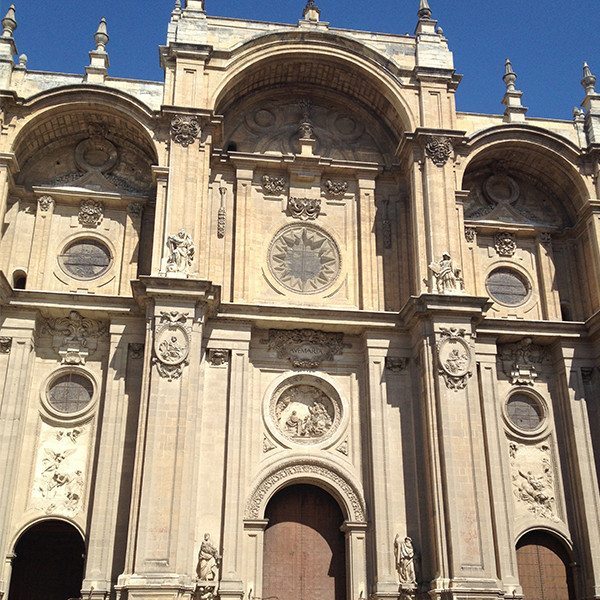Ironically, I have spent the first week and a half of my study abroad not studying. Since classes at the University of Granada only started today, I have spent the majority of my time thus far visiting the main tourist parts of the city. I have composed a list of what I believe are the five must-see places in this gem of Andalusia:
The Alhambra is a massive Moorish fortress that rests on top of a hill and overlooks the city. Granada, which means pomegranate in Spanish, was the last of the Moorish kingdoms to fall to Isabel and Ferdinand in 1492 (which in turn is why Christopher Columbus decided that 1492 was a good year to ask for money to travel to the Americas). Granada’s fame is due in part to the fact that it is a mixture of three different religious traditions: Islam, Christianity and Judaism.
The Alhambra is thought to originally have been a large residence of the Jewish viziers of the Zirid dynasty (1013-1090), although a much smaller building. The palace is filled with intricate artwork and tiling and includes a garden, the Generalife, that is absolutely fascinating. I spent all of our three hour tour with my eyes wide and jaw dropped. The colors and detail put into the inside of the Alhambra make it apparent why this building was nominated as a wonder of the world. Unfortunately, and still a sore topic for the granadinos, the Alhambra came in 8th.
The Granada Cathedral comes upon you suddenly. Tucked into one of Granada’s many plazas in the center of the city, when I first saw this tall, domed building, I wasn’t impressed. The building is giant, almost twice as tall as the surrounding buildings but the outside is composed of dull, brown marble. However, when we walked inside, I quickly changed my mind.
The high vaulted ceilings and intricate designs painted in gold make it hard not to pick up your camera. The cathedral was commissioned by Isabella and Ferdinand and like many other of the churches in Granada, was built where the most important mosque used to be. It took three generations of monarchs to build, and actually is still not finished because the monarchy ran out of money and decided that enough had already been invested. Because of this, well-off Spanish families donated money to pay for the chapels inside the cathedral, each dedicated to a different saint.
The Capilla Real is home to the remains of perhaps Spain’s most famous rulers: Isabella and Ferdinand. Attached to the Granada Cathedral, this small chapel was built specifically for Isabella and Ferdinand. Their original intent was for their entire family and descendants to be buried in the Capilla, but since their children were all married off to different powerful rulers across Europe, only Isabella, Ferdinand and their daughter Joanna and her husband are buried there. Isabella and Ferdinand chose Granada for their final resting place because it was their favorite city in their kingdom, and the Capilla includes a small museum where you can see Isabella’s original crown.
You know you’ve entered the Albaicin, the Arab section of Granada, because suddenly you’re surrounded on both sides by rows and rows of brightly colored clothing and trinkets. Located in the Northern part of town, and often so crowded you can’t move without brushing against someone else, the Albaicin offers a different view on Granada, full of tea houses and open air markets. Composed of twists and turns, exploring the Albaicin takes hours, an amount of time I have yet to dedicate to this part of the city but plan to do soon.
Your legs will hurt when you walk through the Albaicin but they will ache after walking in el Sacromonte. El Sacromonte was the traditional Gitano quarter and has developed into a center of Gitano culture (the Spanish word for the Romani people, or “gypsies”), and personally my favorite part of the city.
Located even higher in the hills of the Sierra Nevadas than the Albaicin, el Sacromonte offers a different view than the other parts of Granada. Here, the houses are built into the hills, painted white, and splashed with blue or hand painted pottery lining the walls. When you turn around, you will see a view of Granada and the Alhambra that I think is better than the most famous viewpoint, Mirador de San Nicolas. A great escape from the rush of city life in central Granada, el Sacromonte offers a perfect place to reflect and simply stare down on the vast city that is Granada.
Visiting these five places creates a solid foundation to understand the culture and history of Granada. Once I visited them all, I felt I was beginning to understand the people of this city more as well. If you travel to Granada, even just for the weekend, spending time at these five places is necessary and well worth all the walking Granada is so famous for.




